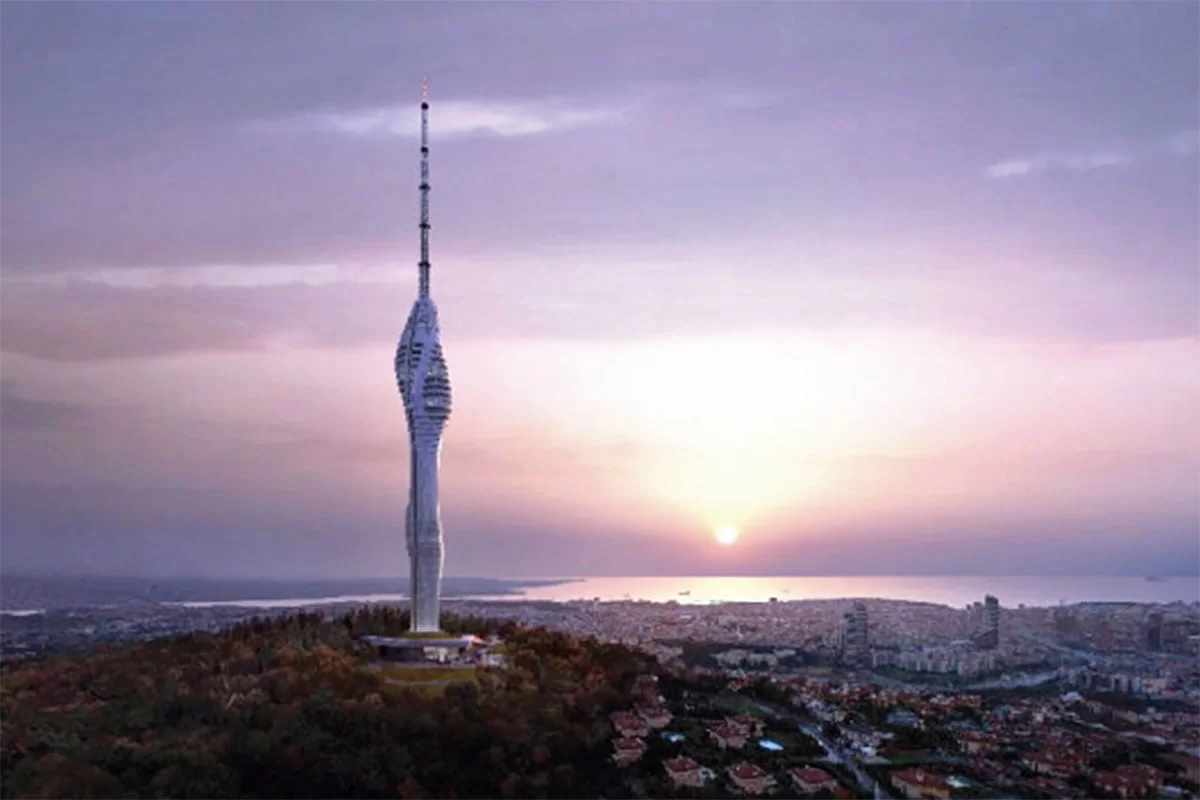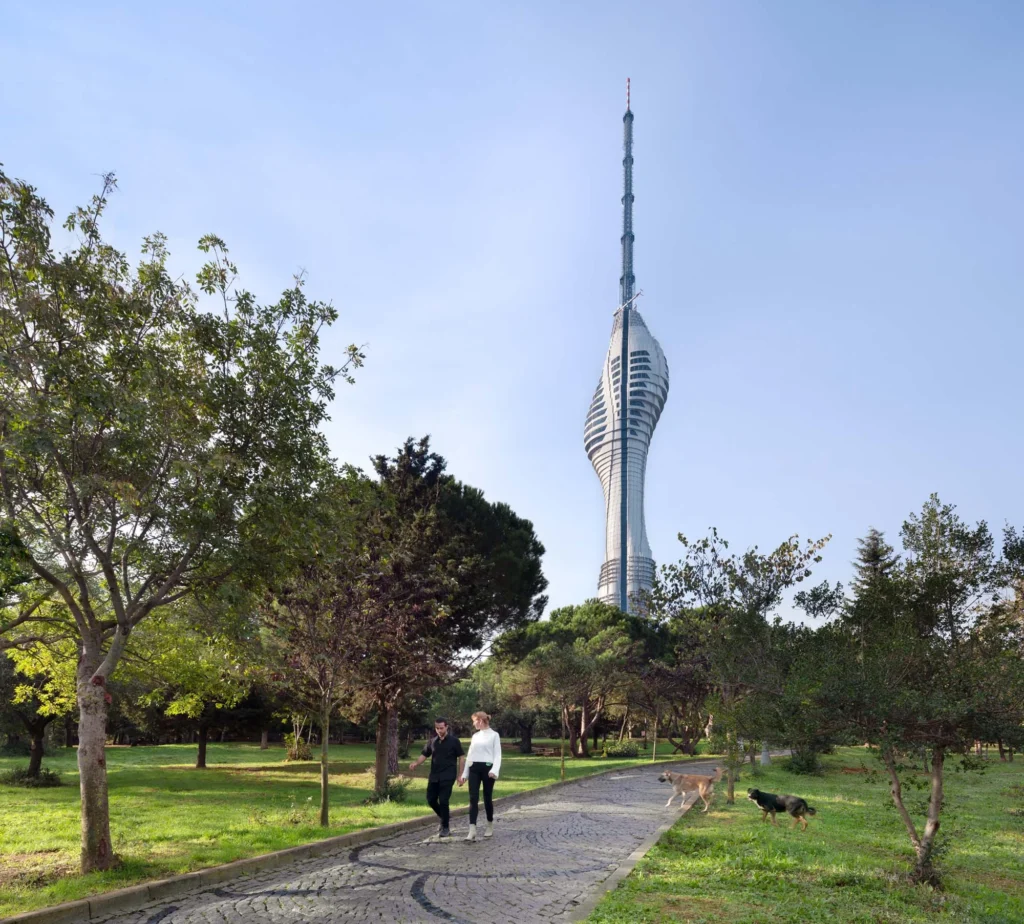Camlica Tower vs Eiffel Tower: Icons Compared
The skyline of a great city tells a story. It is a silhouette punctuated by structures that define its character, ambition, and history. For over a century, the Eiffel Tower has been the undisputed symbol of Paris, an icon of romance and industrial prowess. But across Europe, a new contender has risen in Istanbul, a futuristic spire that redefines its city’s profile: the Camlica Tower. This is the ultimate showdown: Camlica Tower vs Eiffel Tower. It is a battle of eras, a contrast of materials, and a tale of two vastly different, yet equally captivating, urban narratives.
This in-depth comparison will explore every facet of these two monumental structures. We will delve into their architecture and design, dissect their engineering marvels, compare the breathtaking views from their observation decks, and analyze their cultural significance. Whether you are an architecture enthusiast, a world traveler, or simply curious, this guide will provide a definitive look at the old guard versus the new vision.
The Tale of Two Towers: A Snapshot
Before we dive deep, let’s establish a baseline with a quick side-by-side comparison. While one is a historic landmark and the other a modern marvel, the raw numbers help frame the discussion.
Quick Facts: Camlica Tower
- Official Name: Istanbul TV and Radio Tower
- Location: Istanbul, Turkey
- Completed: 2021
- Total Height: 369 meters (1,211 feet)
- Highest Observation Deck: Approximately 268 meters (879 feet)
- Primary Function: Telecommunications and broadcasting tower, observation, and tourist attraction.
- Material: Reinforced concrete and steel.
Learn more details about Camlica Tower
Quick Facts: Eiffel Tower
- Official Name: La Tour Eiffel
- Location: Paris, France
- Completed: 1889
- Total Height: 330 meters (1,083 feet)
- Highest Observation Deck: 276 meters (906 feet)
- Primary Function: Originally a temporary exhibition entrance, now a tourist attraction and radio broadcast tower.
- Material: Wrought iron.
Learn more details about Eiffel Tower
A Clash of Eras: Design and Architecture
The most striking difference in the Camlica Tower vs Eiffel Tower debate is their visual identity, a direct result of the era in which they were conceived.
Eiffel Tower: The Iron Lady’s Industrial Charm
The Eiffel Tower is a masterpiece of 19th-century industrial design. Designed by Gustave Eiffel for the 1889 Exposition Universelle (World’s Fair), its intricate wrought-iron lattice structure was a revolutionary statement. At the time, many Parisians considered it a monstrous eyesore, a stark contrast to the city’s neoclassical architecture.
- Industrial Aesthetic: Its beauty lies in its exposed structure. The 18,038 individual iron parts and 2.5 million rivets are not hidden but celebrated, showcasing the engineering that makes it possible.
- A Symbol of an Age: The tower represents the triumph of the Industrial Revolution, a monument to human ingenuity and the potential of new materials like iron.
- Timeless Grace: Over time, public opinion shifted dramatically. Its delicate yet strong framework has become synonymous with elegance, art, and romance, making it arguably the most recognizable man-made structure on Earth.
Camlica Tower: Istanbul’s Futuristic Silhouette
In contrast, the Camlica Tower is a product of 21st-century design philosophy and technology. Designed by Melike Altinisik Architects, its form is organic, fluid, and monolithic. The design was inspired by the tulip flower, a historic symbol of Istanbul and Turkish culture.
- Futuristic Form: The tower’s body twists and turns as it rises, creating a dynamic and changing silhouette depending on the viewer’s vantage point. This is not an exposed skeleton but a seamless, unified structure.
- Functional Elegance: Its primary purpose was to consolidate over 100 separate and unsightly broadcasting antennas that polluted the Istanbul skyline. The design elegantly conceals this high-tech function within a beautiful form.
- A New Icon for a New Era: The Camlica Tower is a statement about modern Turkey. It represents technological advancement, forward-thinking design, and the nation’s ambition to create new landmarks for the future.
Engineering and Construction Marvels
Building a super-tall structure is a monumental task in any century. The engineering challenges faced by the builders of each tower, separated by 130 years, were immense and required groundbreaking solutions.
Building an Icon in the 19th Century
The construction of the Eiffel Tower was an unprecedented feat of engineering.
- Prefabrication: All the iron parts were prefabricated in Eiffel’s factory on the outskirts of Paris and brought to the site for assembly, a revolutionary concept at the time.
- Precision: Each piece was designed with an accuracy of one-tenth of a millimeter.
- Safety Innovation: Despite the dizzying heights and the era’s limited safety standards, only one worker fatality occurred during construction, a testament to Eiffel’s meticulous planning and use of safety guards and movable scaffolding.
21st-Century Technology in Action
The Camlica Tower leveraged the latest in construction technology to achieve its unique form and function.
- Advanced Concrete: High-performance reinforced concrete was used to create the tower’s monolithic core, providing the strength needed to withstand Istanbul’s seismic activity and high winds.
- Wind Engineering: Extensive wind tunnel testing and computer modeling were essential to ensure the stability and comfort of the tower, especially for visitors on the high-altitude observation decks.
- Sustainability: The tower incorporates modern energy-efficient systems for lighting, heating, and cooling, reflecting contemporary concerns about environmental impact.
The View from the Top: A Tale of Two Cities
The primary allure of any great tower is the view. Here, the Camlica Tower vs Eiffel Tower comparison offers two uniquely magnificent, yet completely different, urban panoramas.
Panoramic Paris from the Eiffel Tower
The view from the Eiffel Tower is a journey through history. As you ascend, the meticulously planned cityscape of Paris unfolds below you.
- A Historic Landscape: You see the River Seine snaking through the city, the grand axis leading from the Louvre through the Tuileries Garden to the Arc de Triomphe, and the charming, orderly rooftops of Haussmann’s 19th-century Paris.
- Iconic Landmarks: The view is a checklist of world-famous sites: Notre Dame, Sacre-Coeur, Montmartre, and the modern skyscrapers of La Defense in the distance.
- The Romantic Vista: It is a view that has inspired countless artists, writers, and lovers. It is undeniably one of the most romantic and iconic city views in the world.
A 360-Degree Vista of Two Continents
The Camlica Tower offers something no other tower in the world can: a panoramic view that bridges two continents. Standing on one of the highest hills in Istanbul, its vantage point is unparalleled.
- The Bosphorus Strait: The star of the show is the majestic Bosphorus, the waterway separating Europe and Asia. You can watch ferries, tankers, and yachts traverse this legendary strait.
- A City of Contrasts: To one side lies the historic peninsula of Europe, with landmarks like the Blue Mosque, Hagia Sophia, and Topkapi Palace. To the other side lies the sprawling, modern metropolis of the Anatolian (Asian) side.
- The Complete Picture: Unlike views from within the historic center, Camlica Tower provides a complete, 360-degree perspective of Istanbul’s immense scale, from the Black Sea in the north to the Sea of Marmara in the south.
The Visitor Experience: More Than Just a View
How do the towers handle the millions of visitors they attract? The experience of ascending each tower reflects its character.
Ascending the Eiffel Tower
A visit to the Eiffel Tower is a historic pilgrimage. The experience is charming but can also be crowded.
- The Ascent: You have the option of taking historic elevators or, for the more adventurous, climbing the 704 stairs to the second level.
- The Levels: There are three levels open to the public, each offering a different perspective, shops, and dining options.
- Dining and Drinks: The tower features multiple restaurants, from casual bistros to the world-renowned Michelin-starred Le Jules Verne. A champagne bar at the very top offers a celebratory toast.
- The Crowds: Be prepared for long security lines and ticket queues, especially during peak season. Booking tickets well in advance is essential.
Exploring the Camlica Tower
A visit to the Camlica Tower is a seamless, modern, and high-tech experience.
- The Ascent: High-speed, state-of-the-art elevators whisk visitors to the observation floors in under a minute, with digital displays showing the journey.
- The Decks: The observation floors feature floor-to-ceiling glass, offering unobstructed 360-degree views. Interactive screens provide information about the landmarks you are seeing.
- Modern Amenities: The tower includes a cafe and a high-end restaurant, both offering stunning panoramic views of the city. The entire facility is climate-controlled and designed for comfort.
- Efficiency: As a new attraction, it is designed to handle crowds efficiently, with a more streamlined ticketing and entry process.
The Verdict: Which Tower Reigns Supreme?
Choosing a “winner” in the Camlica Tower vs Eiffel Tower debate is impossible, as they represent different philosophies. Instead, let’s declare winners based on specific categories.
- Historical Impact: Eiffel Tower. No contest. It is a global icon that has defined its city for over 130 years.
- Architectural Innovation: Tie. Eiffel was revolutionary for its time; Camlica is revolutionary for ours.
- Height & Technology: Camlica Tower. It is taller, more modern, and integrates 21st-century technology seamlessly.
- The View: Camlica Tower. While the Eiffel Tower’s view is iconic, the ability to see two continents from Camlica is a unique and breathtaking experience.
- Visitor Experience: Camlica Tower. Its modern design offers a more comfortable and efficient experience for the contemporary tourist.
- Cultural Symbolism: Eiffel Tower. It is the universal symbol of love, France, and travel itself. Camlica is a powerful new symbol for Turkey, but it has a long way to go to achieve that level of global recognition.
Ultimately, the choice of which to visit depends on what you seek.
- Visit the Eiffel Tower if: You are a romantic, a history lover, and want to experience a timeless piece of world heritage that has captivated humanity for generations.
- Visit the Camlica Tower if: You are a fan of modern design, a technology enthusiast, and want a spectacular, unique view of a city at the crossroads of civilization.
From the iron heart of Paris to the futuristic spire of Istanbul, both the Eiffel Tower and the Camlica Tower are magnificent testaments to human ambition. One is a cherished story written in iron; the other is a bold new chapter written in concrete and glass.



Comment (0)